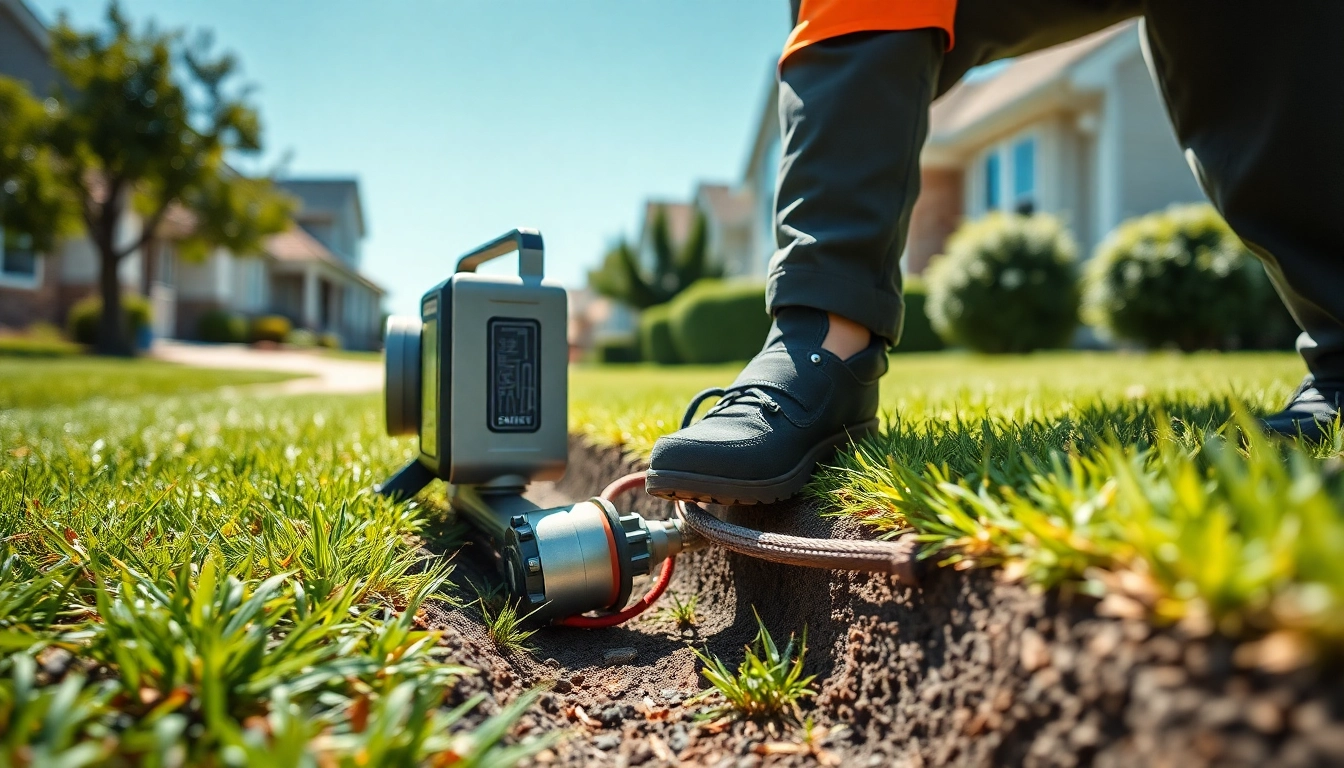The Ultimate Underground Leak Detection Guide: 7 Expert Tips for Homeowners

Understanding Underground Leak Detection
What is Underground Leak Detection?
Underground leak detection is a specialized process used to identify and locate leaks in underground pipes and infrastructure that carry water or other fluids. These leaks can result from a variety of factors, including age, corrosion, ground movement, or external damage. The primary goal of underground leak detection is to find these hidden leaks promptly to mitigate damage and conserve water, as leaks can lead to significant waste and potentially costly repairs.
Importance of Early Leak Detection
The early detection of underground leaks is crucial for several reasons. First, it helps prevent extensive water damage to surrounding structures and landscapes. Water that is not contained can erode foundations, damage landscaping, and create hazardous conditions such as sinkholes. Second, identifying leaks early reduces water loss, conserving this precious resource and safeguarding utility budgets. Lastly, early intervention typically leads to simpler and less expensive repairs, ultimately saving homeowners and companies significant costs. An effective Underground Leak Detection strategy can save time, money, and resources in the long run.
Common Signs of Underground Leaks
Identifying an underground leak can be challenging, but several signs can indicate a potential issue:
- Wet Spots: Unexplained water pooling in your yard or along driveways can signal leaks.
- Unusual Vegetation Growth: Leaks may cause rapid plant growth in certain areas as soil moisture increases.
- Decreased Water Pressure: A noticeable drop in water pressure throughout your home can signify a leak within the pipes.
- Increased Water Bills: A sudden spike in your water bill without a corresponding increase in usage can be a red flag.
- Noise in Pipes: Sounds of rushing water when none is in use may indicate leaks underground.
Techniques Used in Underground Leak Detection
Acoustic Leak Detection
Acoustic leak detection is one of the most commonly used methods for identifying leaks in underground piping systems. This technique involves using sensitive microphones or hydrophones to listen for sounds made by water escaping through fissures in pipes. The technology can detect the sound of flowing water as it escapes, allowing technicians to pinpoint the leak’s location accurately.
Pressure Testing Methods
Pressure testing is another effective method for detecting leaks, particularly in new or repaired piping systems. In this technique, the pipe is filled with water and then pressurized. If there are leaks, the pressure will drop over time. By monitoring this decline, technicians can identify the location of leaks and address them quickly.
Thermal Imaging in Leak Detection
Thermal imaging uses infrared cameras to detect variations in temperature along the surface of ground and buildings. This technology is particularly useful when there are temperature differences due to leaking water. Warm spots on an otherwise cool surface can indicate the presence of a leak, allowing for targeted investigations.
Choosing the Right Equipment for Underground Leak Detection
Key Features to Look For
When selecting leak detection equipment, several features are critical to ensuring effective operation:
- Sensitivity: Equipment should be able to detect very low levels of leak noises or pressure changes.
- Durability: Leak detection devices should withstand various environmental conditions, as they will often be used in the field.
- Portability: Lightweight and portable devices enable easier transportation and quick deployment at job sites.
- Data Logging: The ability to record and analyze data trends over time aids in assessment and future leak-prevention measures.
Comparing Cost and Features
When investing in underground leak detection equipment, it’s essential to balance cost with functionality. While high-end devices may offer advanced features, multiple models at varying price points can provide adequate capabilities for specific tasks. Evaluating options based on your budget and operational needs will help ensure you select the best tools for your home or business.
DIY vs. Professional Equipment
While there are numerous DIY leak detection devices available, the effectiveness of professional-grade equipment generally surpasses these options. Professionals use sophisticated tools that provide precise and accurate results. However, for small issues or initial assessments, DIY equipment can be a cost-effective way of identifying potential leaks.
Best Practices for Underground Leak Detection
Regular Maintenance and Monitoring
Implementing a routine maintenance schedule is vital for keeping piping systems in good condition. Regular inspections can help identify wear and tear before they lead to leaks. Additionally, adopting smart technologies that allow for continuous monitoring can catch issues early, reducing the risk of significant leak development.
Engaging Professionals for Accurate Diagnosis
While DIY methods are useful, professional help should be considered for accurate diagnosis and solution implementation in the case of suspected underground leaks. Professionals have the expertise and technology necessary to deal efficiently with leaks, assessing not only the immediate problem but also potential underlying issues.
Utilizing Technology for Effective Detection
Incorporating the latest technology into leak detection practices enhances accuracy and efficiency. Innovations such as drones or ground-penetrating radar can be instrumental for large or complex systems. Moreover, mobile applications for monitoring water use can provide early warnings for potential issues.
Evaluating the Impact of Underground Leaks
Understanding Damage and Repair Costs
Underground leaks can cause extensive damage, leading to costly repairs. An initial assessment may be required to determine the full extent of damage to foundations, landscaping, and utility systems. Timely leak detection minimizes these costs by allowing repairs to be executed before extensive damage occurs.
Environmental Implications of Underground Leaks
Leakage from underground systems not only affects infrastructure but also poses environmental risks. Contaminants may seep into soil and waterways, impacting local ecosystems. Furthermore, wasted water can contribute to scarcity during dry periods. Protecting against leaks is crucial for environmental stewardship.
Long-Term Benefits of Prompt Detection
Implementing a robust leak detection system pays off in the long run. Not only does it preserve water resources and reduce repair costs, but it can also enhance property value by maintaining the integrity of infrastructure. As awareness of environmental issues grows, the ability to demonstrate a commitment to sustainability through effective leak management becomes increasingly important.





